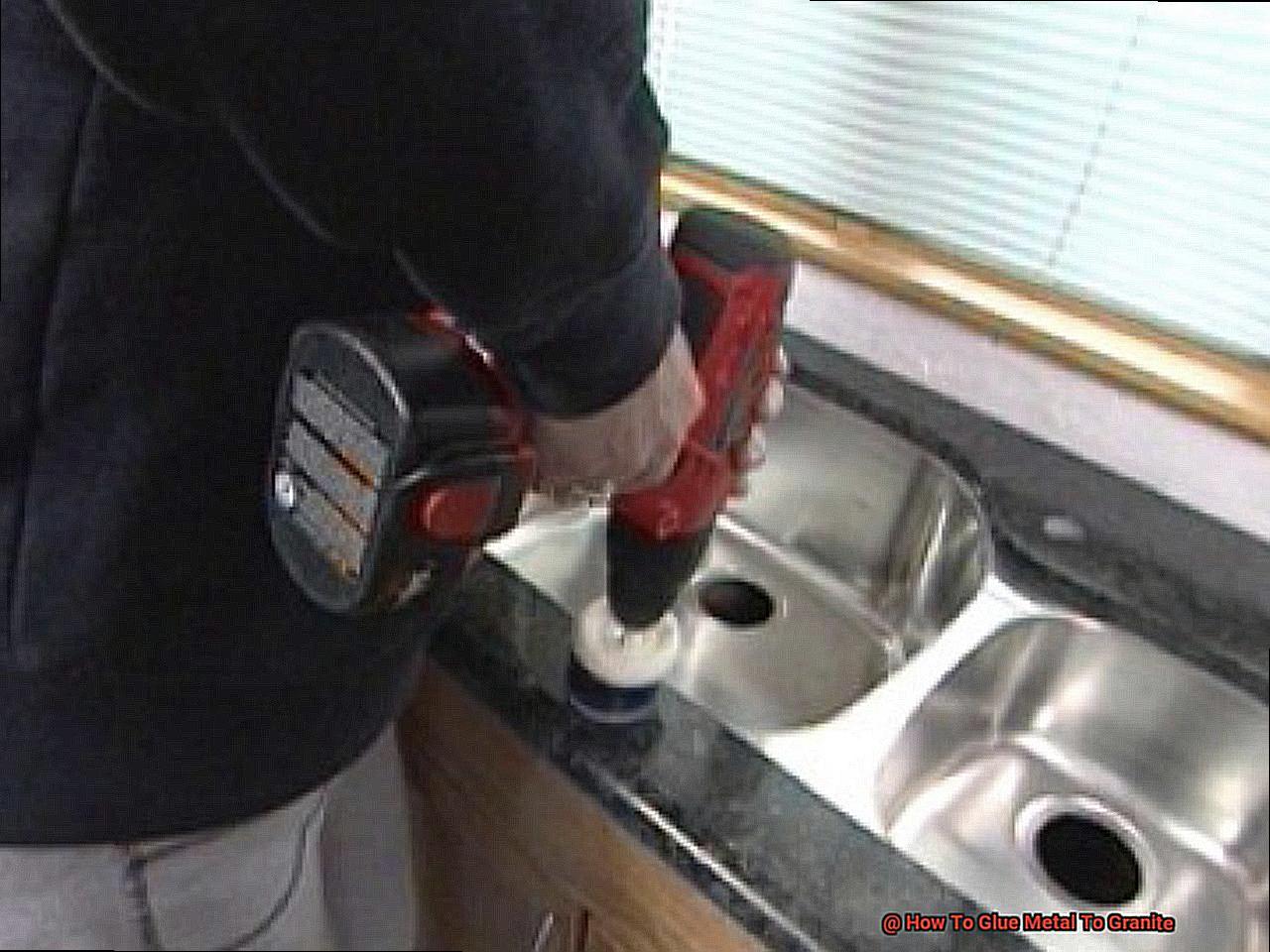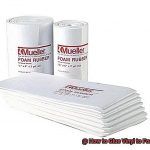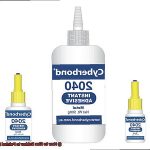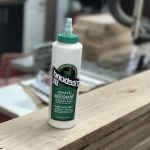Are you looking to create a beautiful work of art or furniture with metal and granite? You can make it happen with the right glue and technique. Gluing metal to granite gives any project an eye-catching look.
But before you start, there are some important steps that must be taken. In this blog post, we’ll cover everything you need to know about how to glue metal to granite. From the types of glues available to tips on making your project last for years, this article will guide you through the process of bonding these two materials together.
Whether you’re an experienced DIYer or just starting out, our guide on how to glue metal to granite can help you create stunning pieces that will be admired by all who see them. Let’s get started.
What You Need To Know Before Glueing Metal To Granite
Contents
Gluing metal to granite is a great way to secure a strong, lasting bond between the two materials. Whether you’re attaching a sculpture, railing, or other metal surface to granite, it’s important to choose the right adhesive and prepare the surfaces properly.
Epoxy is often the best choice for bonding metal and granite. However, not all epoxies are suitable for use on granite; some may contain harsh chemicals that can damage the surface. To ensure a successful bond, select an epoxy specifically designed for use on granite such as Devcon Epoxy, Loctite Epoxy, or Araldite Rapid Epoxy.
Before applying any adhesive, it’s essential to clean and prep both the metal and granite surfaces. This can be done with a mild detergent and warm water followed by a rinse with clear water and a dry cloth. Additionally, roughen up the granite’s surface with sandpaper or a diamond-tipped grinder in order to create small scratches and grooves for an even stronger bond.
Once everything is ready, apply a thin layer of adhesive to both surfaces and press them tightly together. Be sure to follow all instructions closely as drying times will vary depending on the brand of epoxy used.
Choosing The Right Adhesive
Choosing the right adhesive for bonding metal to granite is essential for a strong and lasting bond. With so many options available, it can be difficult to decide which one is best suited for your project. With some research and experience, you can find the adhesive that meets your specific needs.
Two-part epoxy is a popular choice when it comes to metal-granite bonds. Epoxy offers a strong and durable bond that can withstand heavy use or exposure to elements. However, not all epoxies are created equal – choose an epoxy specifically made for metal-stone bonds.
For those looking for a more natural and eco friendly option, vegetable-based adhesives such as soy-based adhesive or glues made from natural latex can also be used. These adhesives are non-toxic, biodegradable, and offer a strong bond that will last for years.
In addition, consider the color of the adhesive when selecting one for bonding metal to granite – some adhesives may discolor or clash with the stone’s natural beauty. Opt for clear or neutral-colored adhesives to avoid any unsightly marks or discoloration.
Overall, picking the right adhesive is key in creating a long-lasting bond between two materials.
Preparing The Surfaces For Glueing
Creating a strong and secure bond between metal and granite requires the utmost preparation. To get it right, you must begin by cleaning and roughening the surfaces intended for gluing.
Start by wiping off any dirt, oil, or debris from both surfaces with a clean, dry cloth or a solvent recommended by the glue’s manufacturer. Next, use sandpaper or a wire brush to roughen up both surfaces. This will create more surface area for the glue to adhere to, resulting in a stronger bond. After roughing up the metal and granite surfaces, give them one last wipe down with a clean cloth to remove any dust or debris generated during this process.
It is also important to make sure that both surfaces are at room temperature before starting the gluing process. Uneven temperatures can affect how well the adhesive bonds and can even lead to glue failure.
Applying The Adhesive
Creating a strong bond between metal and granite surfaces requires precision and care. Applying the adhesive is a critical step that can make or break the bond, so it’s important to do it right. Here are some tips on how to apply the adhesive correctly for a long-lasting bond.
First and foremost, make sure both surfaces are clean and dry before applying any adhesive. Any dirt or grease on the surface will weaken your bond, so it’s essential to get rid of any debris beforehand.
Next, select an appropriate adhesive for your project. Epoxy is an excellent choice for larger metals, while cyanoacrylate (super glue) is better suited for smaller ones. Consider the weight of the metal and how much stress will be placed on the bond when selecting an adhesive.
Once you have chosen an adhesive, mix it according to the manufacturer’s instructions and apply it in thin, even layers using a brush or applicator. Be careful not to use too much adhesive; otherwise, it will overflow and create a mess. Afterward, carefully place the metal on the granite surface and press down firmly to ensure a solid bond. To prevent the adhesive from curing prematurely, use clamps or weights to hold everything in place until dry.
Finally, don’t forget to follow all of the manufacturer’s instructions for your chosen adhesive—some adhesives may require specific curing times or temperatures—and allow everything to dry completely before removing any clamps or weights.
Securing The Bond
Creating a secure bond between metal and granite doesn’t have to be a daunting challenge. By following a few simple steps, you can ensure your metal and granite will remain strong for years to come.
First, selecting the right adhesive is key. Different adhesives work best for different metals and granites, so make sure you choose one that’s appropriate for your project. Once applied according to the manufacturer’s instructions, hold the two pieces tightly together while they cure.
In addition, it’s important to make sure the surfaces are clean and free of any dust or contaminants before gluing them together. Dirty surfaces can prevent the adhesive from properly bonding, leading to a weaker attachment.
Finally, after everything has been glued together and cured properly, give your attachment a gentle tap or push to check for any movement or separation. If there are any gaps or movements are identified, additional adhesive will need to be applied and the attachment resecured until a strong bond is achieved.
Curing The Bond
Creating a strong bond between metal and granite requires patience, precision, and the right adhesive. Curing the bond is a critical step in this process, as it ensures that the two materials are securely connected. Depending on the adhesive used, curing can take anywhere from several hours to several days.
Epoxies are an excellent choice for bonding metal to granite due to their exceptional stability and durability. While they may take longer to cure than other adhesives, the resulting bond is incredibly strong. Silicones offer more flexibility than epoxies and can withstand higher temperatures; however, they may not be as durable or reliable. Cyanoacrylates, or super glues, are great for small projects but may not be suitable for larger ones due to their brittleness.
When using any of these adhesives, it’s essential to follow the manufacturer’s instructions regarding curing time and temperature in order to achieve optimal results. Additionally, make sure that the metal and granite surfaces are clamped or held in place until the adhesive dries completely; this will prevent any movement that could weaken the bond or cause them to shift out of alignment.
YMDZKL-hqeI” >

Troubleshooting Common Issues With Glueing Metal To Granite
Gluing metal to granite is a tricky process, but with the right knowledge and preparation, you can create a secure and lasting connection between the two materials. However, there are certain issues that can arise during the process which can be difficult to troubleshoot. Let’s take a look at some of the most common problems and how to solve them from surface contamination to incorrect glue selection.
The first step in any successful gluing job is to make sure that both surfaces are clean and free of dirt, dust, or other debris that could interfere with the adhesive bond. If any contamination is present on either surface, it should be removed before proceeding. Additionally, the granite surface should be roughened or etched to provide a better grip for the glue. A primer or promoter may also help improve adhesion between the metal and stone surfaces.
Another issue that often arises is getting the glue to dry properly or cure evenly. This can be caused by using an incorrect or low-quality glue, not following manufacturer instructions for safe use, or not allowing sufficient time for curing. To address this issue, it’s important to select the right glue for your project and then follow all application instructions including any recommended drying or curing times. It may also be necessary to apply clamps or other pressure to ensure a tight fit and proper curing of the glue.
Finally, when gluing metal to granite, it’s important to consider long-term durability because prolonged exposure to moisture and temperature changes over time can weaken the bond resulting in separation from the granite surface.
To prevent this from happening, choose a high-quality durable glue specifically designed for bonding metal to stone surfaces and then ensure that your joint is properly sealed against environmental factors such as humidity and temperature fluctuations.
Also Read: How to Glue Rubber to Wood – Glue Things
Conclusion
Gluing metal to granite is a great way to create stunning, long-lasting works of art or furniture. With the right adhesive, technique and planning, you can achieve a strong bond that will last for years.
This guide has all the information you need to know about how to glue metal to granite – from selecting the correct adhesive to prepping and washing surfaces.
Whether you’re an experienced DIYer or just starting out, with a bit of practice and patience you can produce beautiful metal and granite pieces that will amaze everyone who sees them.






